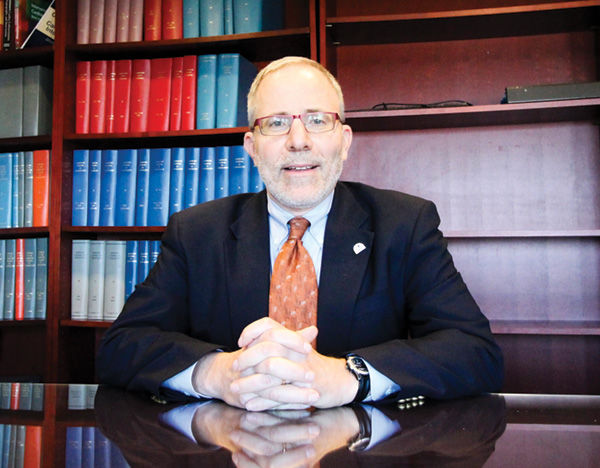SLU doctor studies prescription price disparities
Published January 18, 2017
Earlier this year, Dr. Paul Hauptman heard from an uninsured patient coping with heart failure that he had not filled a prescription because a month’s supply of the generic medication would cost $100.
“Like me, I think a lot of doctors assume that if you’re writing a prescription for a generic drug that it will be affordable, and that’s not necessarily the case,” Hauptman said. “I just couldn’t believe it.”
Hauptman assembled a team to research the issue. They discovered that the prices for commonly used generic heart-failure drugs vary widely, not only from pharmacy to pharmacy but even in different locations of the same retail chain.
ADVERTISEMENT
The team consisted of Zackary D. Goff, a fourth-year St. Louis University medical student; Dr. Andrija Vidic, a SLU cardiologist; John T. Chibnall, a professor in the SLU School of Medicine; and Barry E. Bleske, professor of pharmacy practice and administrative sciences in the University of New Mexico College of Pharmacy.
Hauptman recently talked about the study.
Were you aware of broad price differences before the study?
We’d heard about some issues with pricing, but when we heard that a month’s supply of digoxin costs $100, well, that was the genesis for the study.
The team surveyed pharmacies in 153 chain stores and 22 independently owned pharmacies in the bistate region about the cost to uninsured customers for digoxin, lisinopril and carvedilol, all generic medications. What did you learn?
ADVERTISEMENT
The 30-day cash purchase price for the three together ranged from $20.19 to $256.77 for the low doses of the drugs, with a median price of $67.98; and $12 to $397.58 for the high doses of the drugs, with a median price of $70.68.
Was that finding unexpected?
We went into this project thinking that independent pharmacies might charge more or maybe location would matter, with patients in the lower socio-economic neighborhoods paying more.
Were those patterns confirmed?
We found no patterns at all. People can’t tell what they will pay when they walk into a pharmacy in any neighborhood. Prices varied even at individual stores owned by a single major pharmacy chain.
The American Heart Association reported in 2013 that an estimated 7.3 million Americans with cardiovascular disease are underinsured or uninsured. What are the implications if they cannot pay for their medications?
They are vulnerable medically and may have limited resources and social supports. Patients who leave the pharmacy without filling the prescription are at increased risk for rehospitalization, recurrence of symptoms and more. This should be fixable, but the business model is very complicated.
What can you tell us about the business model?
Medications take a journey from generic manufacturer to one or more distributors/wholesalers to retail pharmacies. Business deals are being made, all with fees associated with them.
Your research was highlighted in November at the American Heart Association’s Scientific Sessions 2016 in New Orleans, and a research letter was published in JAMA Internal Medicine. What has been the response?
Lack of affordability of medications is a real-life, everyday problem, but the variability in pricing of generic heart drugs got a lot of notice.
What’s next regarding this study?
We hope it is replicated in other areas, because it’s difficult to believe that variability in pricing is happening only in eastern Missouri and southern Illinois.
How did your Jewish upbringing influence your choice of a helping profession?
I grew up in New York City, the son of immigrants from Nazi-occupied Europe, and I learned a lot about hard work and the value of helping others. Interestingly, at a scientific meeting about heart failure several years ago, as I talked with three colleagues, it occurred to me that all of us were children of parents who had miraculously escaped Germany or Eastern Europe with their families. How we all ended up at the same meeting in the same city talking about the same topic is and was a mystery.















